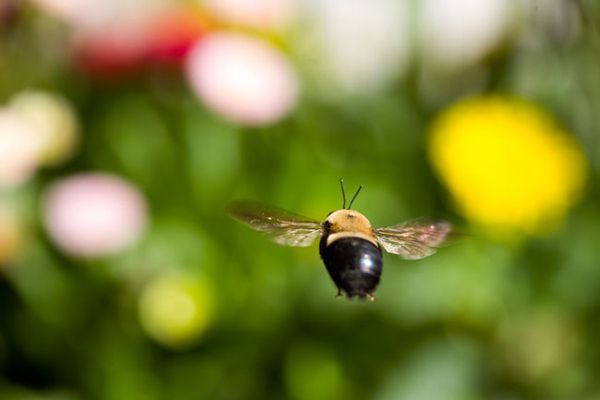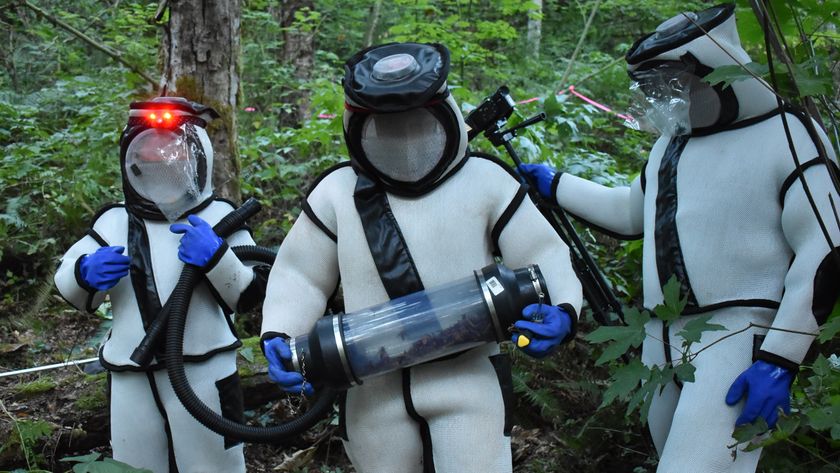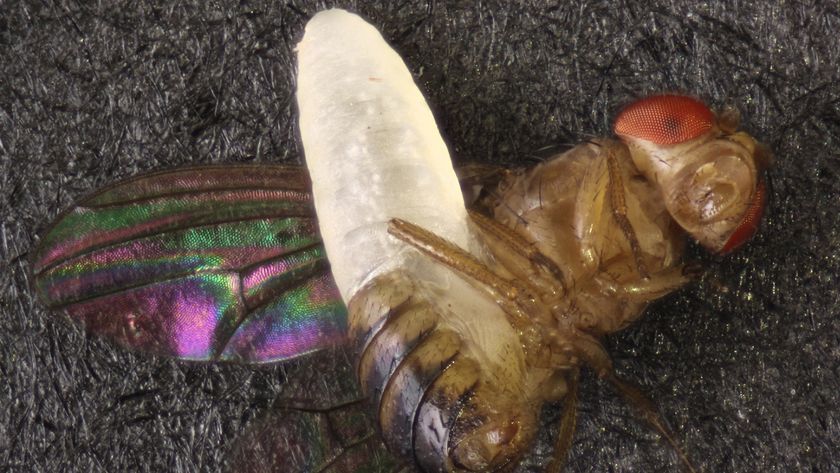Explained: The Physics-Defying Flight of the Bumblebee

Short and stubby, the bumblebee doesn't look very flight-worthy. Indeed, in the 1930s, French entomologist August Magnan even noted that the insect's flight is actually impossible, a notion that has stuck in popular consciousness since then.
Now, you don't need to be a scientist to raise an eyebrow at this assertion, but it sure is easier to explain the bumblebee's physics-defying aerodynamics if you're Michael Dickinson, a professor of biology and insect flight expert at the University of Washington.
"The whole question of how these little wings generate enough force to keep the insect in the air is resolved," Dickinson told Life's Little Mysteries. "There are details remaining, but it's just not an enigma anymore."
Dickinson published a 2005 study in the journal Proceedings of the National Academy of Sciences on the flight of the bumblebee after gathering data using high-speed photography of actual flying bees and force sensors on a larger-than-life robotic bee wing flapping around in mineral oil. He says the big misconception about insect flight and perhaps what tripped up Magnan is the belief that bumblebees flap their wings up and down. "Actually, with rare exceptions, they flap their wings back and forth," Magnan said.
Take your arm and put it out to your side, parallel to the ground with your palm facing down. Now sweep your arm forward. When you reach in front of you, pull your thumb up, so that you flip your arm over and your palm is upwards. Now, with your palm up, sweep your arm back. When you reach behind you, flip your hand over again, palm down for the forward stroke. Repeat. If you gave your hand a slight tilt (so that it's not completely parallel to the ground), Dickinson said, you'd be doing something similar to a bug flap.
{youtube yRE2rMIXvyU}
The fluid dynamics behind bumblebees' flight are different from those that allow a plane to fly. An airplane's wing forces air down, which in turn pushes the wing (and the plane it's attached to) upward. For bugs, it isn't so simple. The wing sweeping is a bit like a partial spin of a "somewhat crappy" helicopter propeller, Dickinson said, but the angle to the wing also creates vortices in the airlike small hurricanes. The eyes of those mini-hurricanes have lower pressure than the surrounding air, so, keeping those eddies of air above its wings helps the bee stay aloft.
Sign up for the Live Science daily newsletter now
Get the world’s most fascinating discoveries delivered straight to your inbox.
Other studies have confirmed that bees can flyin one of the more colorful projects, in 2001, a Chinese research team led by Lijang Zeng of Tsinghua University glued small pieces of glass to bees and then tracked reflected light as they flew around in a laser array. But now, Dickinson says, researchers are more interested in the finer points of how insects control themselves once they're in the air. Those studies will be especially important for a fleet of robotic insects in development, including robobees created by a team at Harvard University.
Got a question? Send us an emailThis e-mail address is being protected from spambots. You need JavaScript enabled to view it and crack it.












